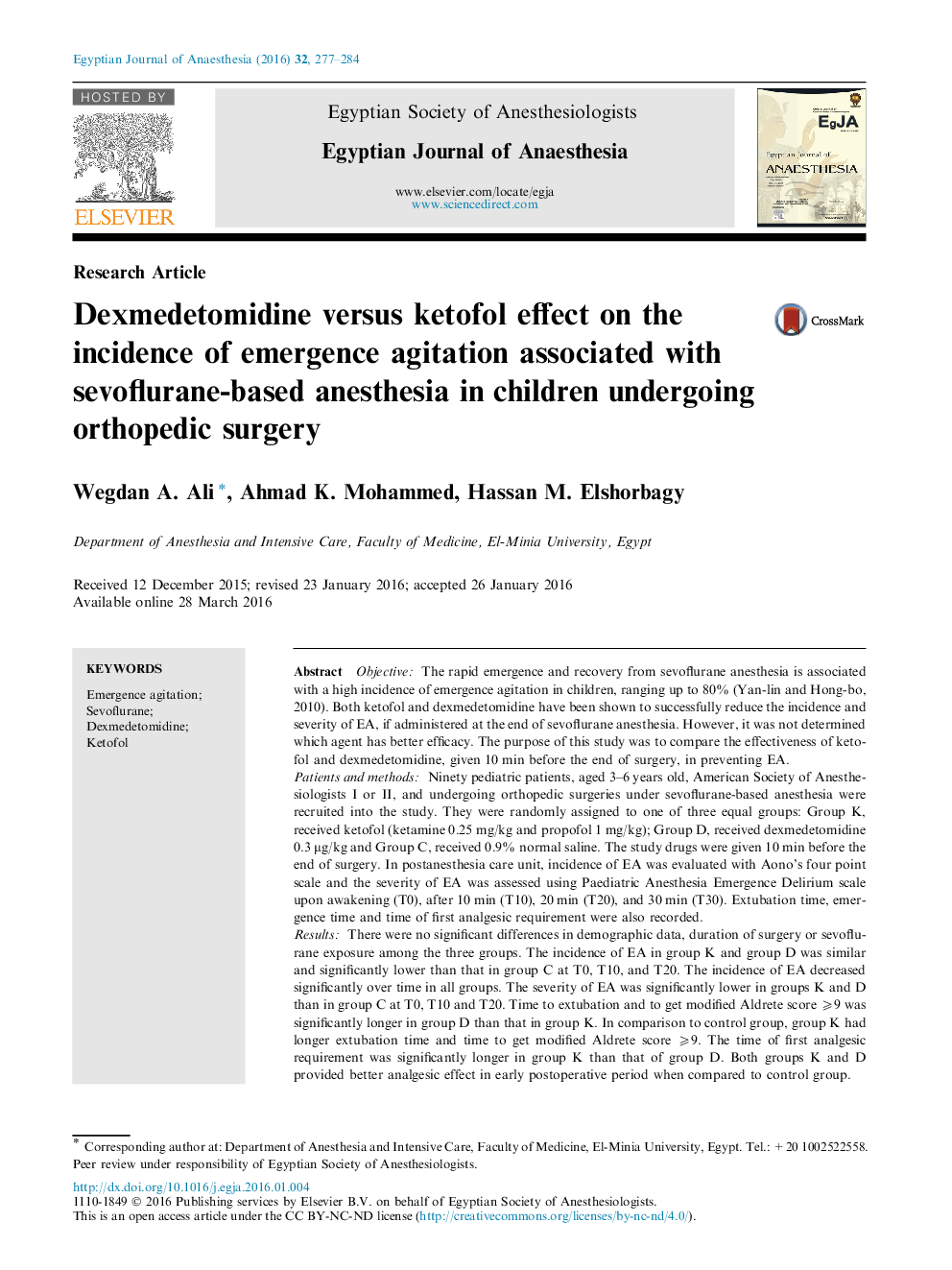| کد مقاله | کد نشریه | سال انتشار | مقاله انگلیسی | نسخه تمام متن |
|---|---|---|---|---|
| 2756115 | 1567408 | 2016 | 8 صفحه PDF | دانلود رایگان |

ObjectiveThe rapid emergence and recovery from sevoflurane anesthesia is associated with a high incidence of emergence agitation in children, ranging up to 80% (Yan-lin and Hong-bo, 2010). Both ketofol and dexmedetomidine have been shown to successfully reduce the incidence and severity of EA, if administered at the end of sevoflurane anesthesia. However, it was not determined which agent has better efficacy. The purpose of this study was to compare the effectiveness of ketofol and dexmedetomidine, given 10 min before the end of surgery, in preventing EA.Patients and methodsNinety pediatric patients, aged 3–6 years old, American Society of Anesthesiologists I or II, and undergoing orthopedic surgeries under sevoflurane-based anesthesia were recruited into the study. They were randomly assigned to one of three equal groups: Group K, received ketofol (ketamine 0.25 mg/kg and propofol 1 mg/kg); Group D, received dexmedetomidine 0.3 μg/kg and Group C, received 0.9% normal saline. The study drugs were given 10 min before the end of surgery. In postanesthesia care unit, incidence of EA was evaluated with Aono’s four point scale and the severity of EA was assessed using Paediatric Anesthesia Emergence Delirium scale upon awakening (T0), after 10 min (T10), 20 min (T20), and 30 min (T30). Extubation time, emergence time and time of first analgesic requirement were also recorded.ResultsThere were no significant differences in demographic data, duration of surgery or sevoflurane exposure among the three groups. The incidence of EA in group K and group D was similar and significantly lower than that in group C at T0, T10, and T20. The incidence of EA decreased significantly over time in all groups. The severity of EA was significantly lower in groups K and D than in group C at T0, T10 and T20. Time to extubation and to get modified Aldrete score ⩾9 was significantly longer in group D than that in group K. In comparison to control group, group K had longer extubation time and time to get modified Aldrete score ⩾9. The time of first analgesic requirement was significantly longer in group K than that of group D. Both groups K and D provided better analgesic effect in early postoperative period when compared to control group.ConclusionWe found that ketofol in a dose (propofol 1 mg/kg in a combination with ketamine 0.25 mg/kg) was as effective as dexmedetomidine in a dose of 0.3 μg/kg for prevention of EA, but with better analgesic effect and without delaying of emergence.
Journal: Egyptian Journal of Anaesthesia - Volume 32, Issue 3, July 2016, Pages 277–284